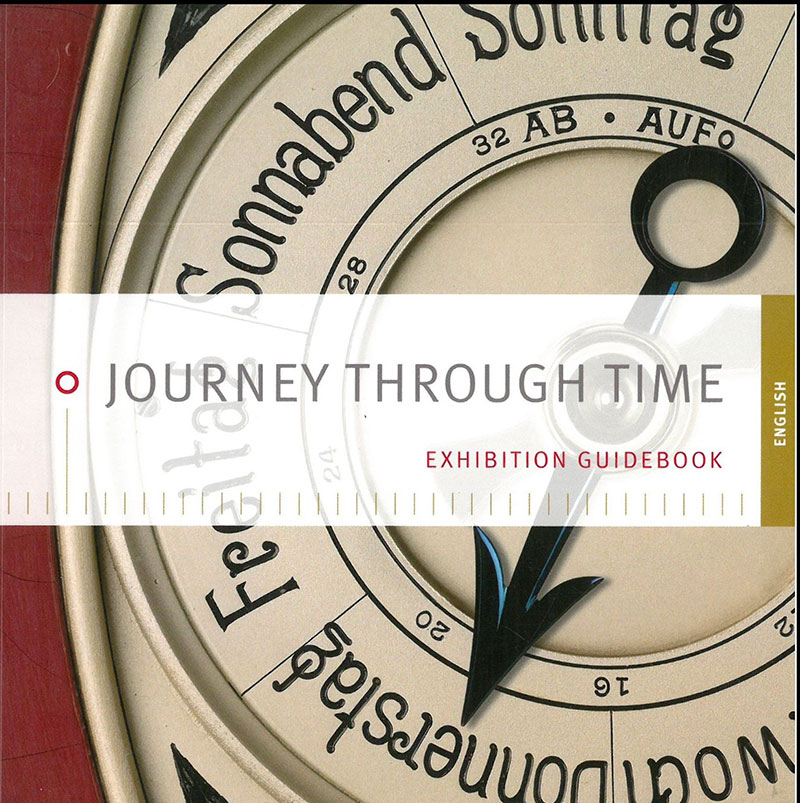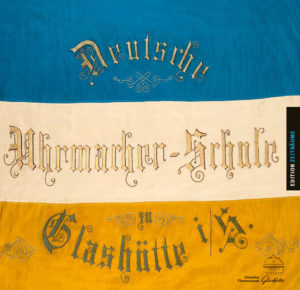Time become space here
Permanent exhibition
Under the slogan “The fascination of time – bringing time to life”, the German Watch Museum Glashütte is not only bringing to life the long tradition of mechanical horology, but is also allowing you to engage emotionally with the phenomenon of time.
On two floors and over an exhibition area of 1000 m², more than 500 unique exhibits are presented and brought to life using multimedia. Glashütte pocket watches, pendulum clocks and wristwatches from various eras, marine chronometers, historical documents, tools and photographs are staged artistically.
Thematically, the exhibition consists of a series of “historical rooms”, “time rooms” and an exhibition workshop, framed by a prologue and an epilogue. The “historical rooms” deal with the historical context of the watchmaking town and introduce famous individuals and founding fathers who helped Glashütte become a stronghold of fine German horology. Throughout the exhibition, other eras that significantly shaped Glashütte are represented, such as the years of rapid industrial expansion, the First and Second World Wars, the era of disassembly and expropriation and the era of reunification and re-establishment. The “time rooms” interrupt the chronological sequence of Glashütte watchmaking history and lead the visitor off into exhibits like the microcosm of a mechanical watch, allowing them to experience the precision and interplay of hundreds of individual parts. A further multimedia “time room” containing an interactive glossary of timekeeping also invites guests to discover things for themselves.
As a state-of-the-art world of time, the museum not only attracts watch enthusiasts but also makes a special effort to appeal to young people and families who would like to learn more about the secrets of timekeeping.
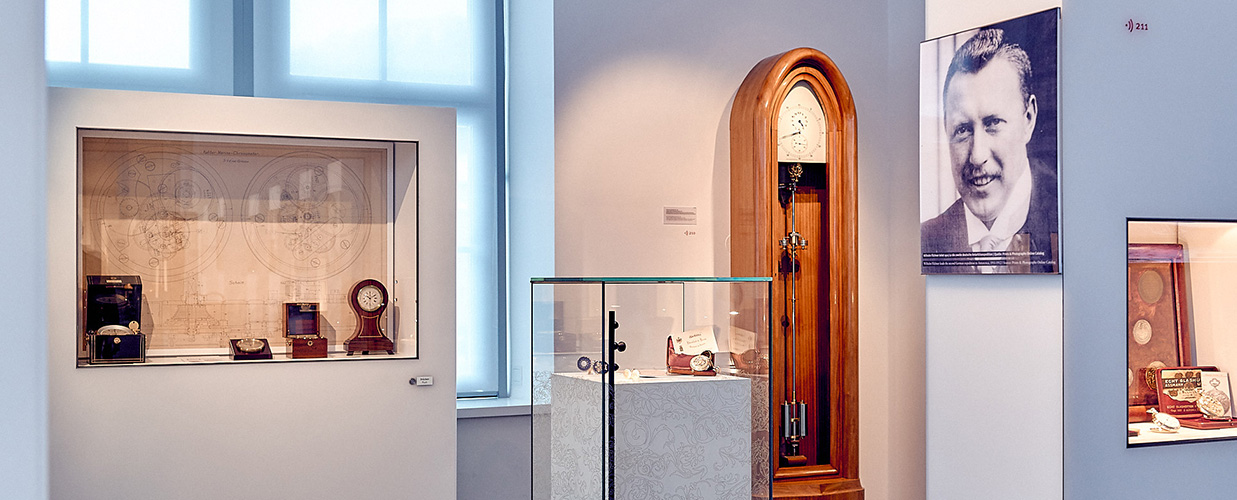
A glance into the exhibition rooms
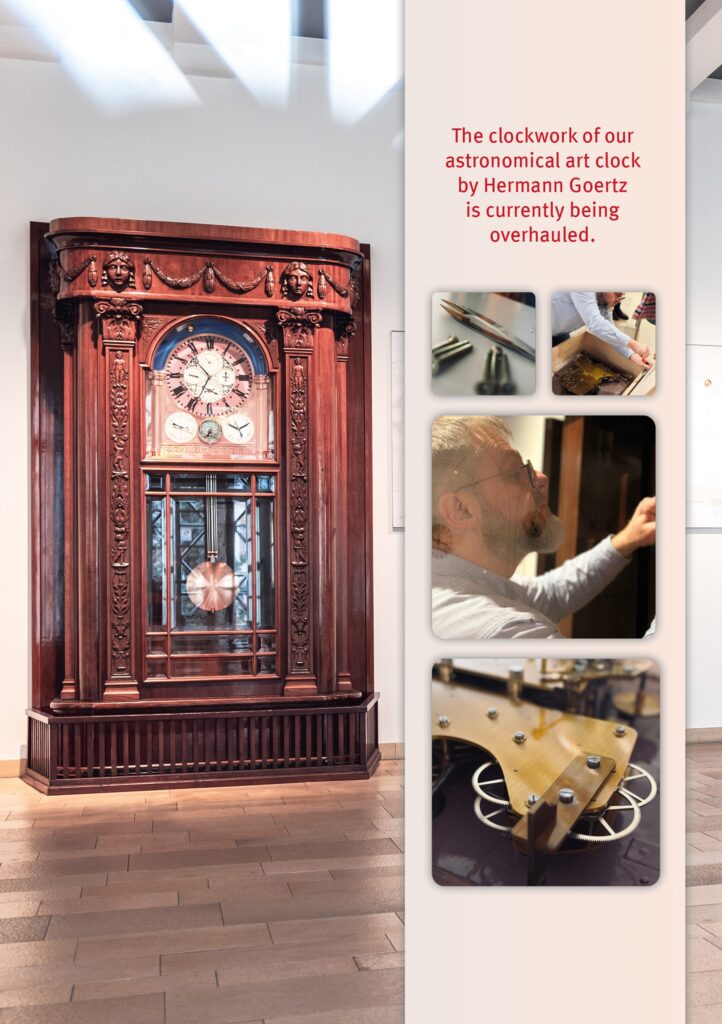
In the foyer, you will be impressed by Hermann Goertz’s monumental astronomical art clock with its 1756 individual parts. Its features include a perpetual calendar and several astronomical displays. It has been undergoing a special overhaul since 5 December 2024. For the first time in 100 years, parts are being replaced, which in turn had to be specially measured and manufactured for this purpose. We have captured the moment the clock stopped and the removal of the movement for you.
#the moment the clock stopped
#the removal of the movement
Feel free to listen to the unique hourly stroke of the astronomical clock in the audio archive and live in the museum every quarter of an hour.
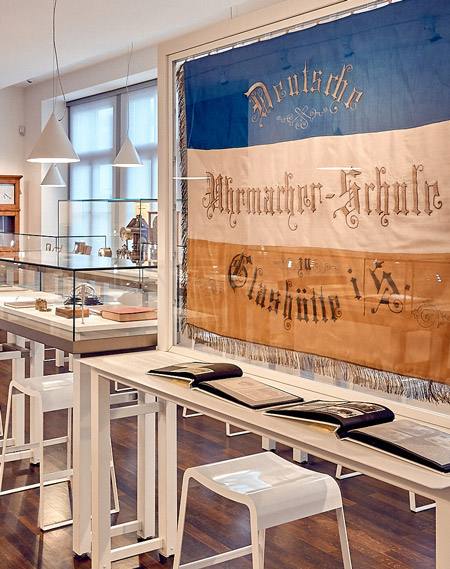
The historical room describes the history of the German School of Watchmaking in Glashütte, which was housed in this building. The three rows of showcases symbolise the three-year training to become a watchmaker.
The school building
In our shop, you will find the book „Deutsche Uhrmacherschule Glashütte“ (German School of Watchmaking in Glashütte), with more information on the history of the School of Watchmaking, the teaching content and the work of the pupils.
The “GDR era” historical room shows how the Glashütte tradition was upheld despite the difficult conditions. A wide range of products from the VEB Glashütter Uhrenbetriebe (VEB GUB) is exhibited here.
Dive into the 1960s in style – there are more films in the watch museum.
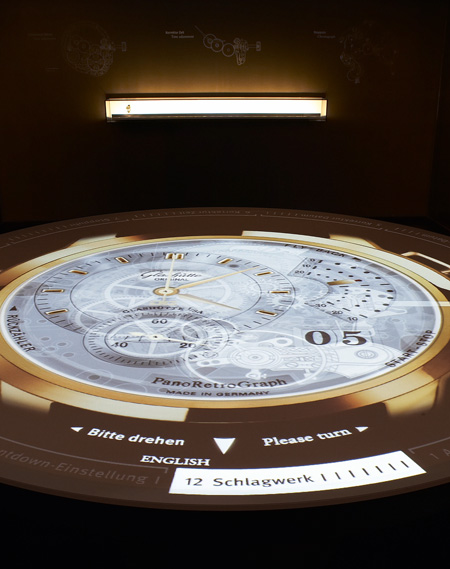
In the time room, a multimedia projection table illustrates the structure of a mechanical watch. Visitors can experience and interactively discover the perfect interplay of many hundreds of individual parts.
